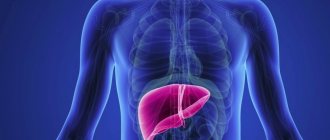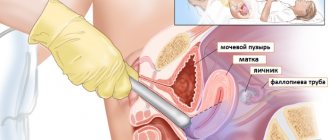One of the most dangerous viral liver diseases is hepatitis. The key factor in successful therapy against viruses is early and accurate diagnosis based on laboratory tests. Therefore, a test for hepatitis is prescribed by many highly specialized doctors before any manipulation, during pregnancy or if pathological processes in this organ are suspected.
COST OF LIVER EXAMINATION IN OUR CLINIC IN ST. PETERSBURG
| 4 tests for infections, express (hepatitis B, C, HIV, syphilis) | 1550 rub. |
| Appointment with a therapist | 1000 rub. |
| Comprehensive abdominal ultrasound | 1200 rub. |
| Call for free: 8-800-707-1560 | |
How dangerous is hepatitis for humans?
The content of the article
Any pathology developing in the liver is a serious cause for concern. This organ is a kind of filter that cleanses the blood of toxins. The liver removes toxic compounds from the body or neutralizes their effect. The diseased liver cannot cope with its functions, and the body is gradually poisoned.
Hepatitis is an insidious disease that leads to cirrhosis and liver cancer, so they need to be urgently identified and treated. Both cirrhosis and liver cancer are virtually incurable.
Types of viral hepatitis
Hepatitis A, also called Botkin's disease, is transmitted through dishes, food and water. This is an acute disease that always manifests itself with vivid symptoms (yellowing of the skin, change in the color of urine and stool).
Hepatitis B and C and C are transmitted through blood and sexual contact. They can exist in acute and chronic forms. You should also remember about one more type of disease - carriage. Hepatitis B often occurs in the form of an acute disease, which ends in recovery with good immunity, or turns into a carrier of the virus (with weak immune defense).
The most dangerous is viral hepatitis C, which doctors call the “gentle killer.” The chances of being acutely ill with it and making a full recovery are small. Usually the disease becomes a chronic process, and then damage to liver cells continues for decades.
Everything can end in fibrosis, cancer and complete disruption of the functioning of this important organ. Carriage of the disease passes without symptoms and poses a danger more to others than to the carrier himself, since his blood can become a source of infection.
What is a hepatitis test: rapid test and complete diagnosis
Analyzes or tests are laboratory research methods performed to accurately determine the presence of antibodies to hepatitis viruses. A rapid test may be performed first. It is prescribed when all the symptoms of the disease are present, and you need to get results urgently.
The express method involves pricking a finger to obtain a drop of blood. It is placed on a special sensitive test strip, and the result is ready in a few minutes. The data obtained do not provide a basis for making an accurate diagnosis, but make it possible to determine the tactics for further diagnosis.
A comprehensive examination for hepatitis is not one procedure, but several methods for obtaining and analyzing biological material, complementary to each other:
- general and biochemical blood test;
- coagulogram (blood clotting test);
- blood serum test for antibodies (ELISA);
- determination of DNA or RNA of the virus.
The likelihood of liver infection during such an examination will be the most accurate, since the basis for diagnosis is a number of indicators.
The diagnosis needs to be supplemented by an ultrasound of the abdominal cavity, with a thorough examination of the liver.
Types of analyzes
PCR to detect hepatitis C involves several studies:
- qualitative analysis;
- quantitative analysis;
- genotyping.
Qualitative analysis
PCR is also called qualitative analysis. If it shows a negative result, it means that the virus cannot be recognized in the body, since its content is less than what the equipment can detect. In such a situation, you need to determine how sensitive the reagent is in order to adjust the further solution.
The test can show a positive result as early as about five days after a person becomes infected.
Quantitative Analysis
This type of analysis study demonstrates the level of viral load, i.e. the concentration of flavivirus in the body - how many fragments of the virus are per 1 cubic cm of the patient’s blood.
This type of PCR test is prescribed to the patient before starting antiviral therapy, or after three months of treatment, to see how effective the prescribed course is.
This type of analysis shows:
- how great is the danger of infecting another person, this probability is directly proportional to the viral load readings;
- what treatment is suitable in this case, and how fruitful it will be;
- Duration of treatment - the higher the concentration of viruses, the longer the therapy will be.
The patient should be aware that the severity of the disease may not depend on the level of viral load. Sometimes, even with a high concentration of viruses in the patient’s blood, the liver is only slightly damaged. However, if a pregnant woman has a high level of viral load, then there is a high probability of transmitting the disease to her child.
It is believed that the lower norm of RNA virus concentration is up to 600,000 IU/ml, the average is from 600,000 to 700,000, the high is from 800,000 and above.
Genotyping
Due to the fact that this virus is subject to high mutation, it is very important during the study to determine which specific genotype is in the human blood. In total, there are 11 genotypes of hepatitis C and many of their subtypes. But only three are common in Russia: 1, 2 and 3.
Genotyping makes it possible to determine how resistant the virus is. The method of treatment depends on this.
All hepatitis C genotypes respond differently to treatment. Genotype 1 can be treated for at least a year, and the chance of recovery is about 60%. Genotypes 2 and 3 are treated for six months, and the probability of getting rid of the disease is about 85%.
In addition, genotyping makes it possible to see the condition of the patient’s liver. For example, accumulation of fat in the liver indicates that the patient suffers from genotype 3 of the virus.
A blood test at this stage shows a number that characterizes the genotype. It occasionally happens that it is not possible to determine the genotype, and the answers from the laboratory indicate “not typable.” This means that the person suffers from a genotype that is not common in that geographic area. To detect it, you will have to take the test again, but with a diagnostic system that can recognize it.
When is it appointed?
Anyone can check their health and take tests in the clinic’s treatment room. You don't need a referral to do this - just say that you want to take the test.
Patients with jaundice of the skin, weakness, nausea, fever, loss of appetite and heaviness in the right hypochondrium receive a mandatory referral for examination from a general practitioner, gastroenterologist or hepatologist. These are the main clinical manifestations of hepatitis of any kind.
A procedure is also prescribed when the concentration of intracellular enzymes AsAt and AlAt is increased.
Donors, employees of medical institutions, specialists in contact with people and pregnant women must donate blood.
3. Examination to prescribe therapy for viral hepatitis B and C
Examination for prescribing antiviral therapy for viral hepatitis C
- Complete examination of the hepatitis C virus (genotype and viral load);
- Tests for hepatitis B virus in order to get vaccinated, if test results allow;
- Complete examination of the liver: biochemical tests reflecting the structural and functional state of the liver cells, ultrasound of the abdominal cavity with Dopplerography, assessment of the degree of fibrosis (Elastometry, FibroMax, fibrotest);
- Tests to exclude contraindications for prescribing therapy: clinical blood test, hormones and ultrasound of the thyroid gland, autoimmune antibodies;
- For patients over 40 years of age, examination of the heart, blood vessels and respiratory system is prescribed.
The cost of the examination is 30,000 rubles.
(may change if you have already had tests done, or if you need other tests in addition to the standard examination).
Examination for prescribing antiviral therapy for viral hepatitis B
- Complete examination of the hepatitis B virus: all enzyme-linked immunosorbent parameters, as well as PCR analysis with viral load;
- Delta virus analysis;
- Complete examination of the liver: biochemical tests reflecting the structural and functional state of the liver cells, ultrasound of the abdominal cavity with Dopplerography, assessment of the degree of fibrosis (Elastometry, FibroMax, fibrotest);
- Clinical blood test;
- Analysis for B virus mutation and drug resistance.
The cost of the examination is 28,500 rubles
. (may change if you have already had tests done, or if you need other tests in addition to the standard examination).
What does a hepatitis test show?
There are 2 possible answers in the analysis results:
- The wording in the conclusion is “negative result” - no RNA virus was detected, no infection. A negative response indicates that there was no reaction to the presence of the appropriate type of antigen.
- The wording in the description of the test “positive” indicates the need for a repeat examination to clarify the result and presumably that the person is seriously ill.
The results also indicate which virus is present in the liver.
The process of deciphering the results
PCR tests for hepatitis C obtained from the laboratory usually indicate certain data, and you can even decipher them yourself:
- detected/not detected (qualitative analysis);
- number of viruses (quantitative analysis);
- genotype number;
- test name.
It is believed that the greatest attention should be paid to the second point, since based on these indicators, a prognosis can be made, the duration of treatment and its type can be determined.
Despite the clarity of the analysis, you cannot independently diagnose yourself and self-medicate; the results of the analysis must be shown to your doctor.
Markers of virus infection by type of hepatitis
Hepatitis A is the most benign form of infection, causing virtually no complications or serious liver damage.
Indications for testing for hepatitis A:
- clinical manifestations of the virus;
- increased levels of ALT and AST;
- contact with a carrier of infection;
- cholestasis (delayed release of bile).
The following blood serum tests help clarify the diagnosis:
- polymerase chain reaction method for detecting virus RNA sections in the blood;
- determination of G-igG antibodies, which are produced during the development of pathology and remain in the blood forever;
- detection of immunoglobulins M-igM in the blood.
Hepatitis B leads to complications and significant damage to the liver; often the result of advanced disease is cirrhosis and cancer of the organ.
Indications for testing for hepatitis B:
- preparation for vaccination or confirmation of its effectiveness;
- clinical manifestations of the virus in the absence of HBs antigen.
To make an accurate diagnosis, the following tests are performed:
- tests for the presence of Anti-HBclgG antibodies and HBsAg antigen;
- qualitative tests for Anti-HBcgM antibodies and HBeAg protein.
Hepatitis C is the most insidious form of the disease, characterized by an asymptomatic course. It is found, as a rule, in a chronic form, when the process of liver damage has begun.
Indications for testing for hepatitis C:
- clinical manifestations of the virus;
- preparation for surgery;
- pregnancy planning;
- parenteral manipulations;
- cholestasis;
- intravenous drug addiction.
To make an accurate diagnosis, the following blood tests are performed:
- for the presence of Anti-HCV and IgG;
- polymerase chain reaction method for determining viral RNA;
- interleukin-25-beta study;
- test for antibodies to different antigens of the hepatitis C virus.
The only accurate method for diagnosing hepatitis is a blood test.
Preparing for the study
In order for the hepatitis test to be informative and the results reliable, it is necessary to prepare for laboratory testing. Here are some useful tips:
- Blood should be donated on an empty stomach. At least 8 hours must pass from the last meal to the analysis;
- In the morning you are allowed to drink only still water;
- you need to start preparing for the study two days in advance, you need to give up fatty, spicy foods, limit physical activity and stress;
- A week before donating blood, you need to stop taking antiviral medications.
Hepatitis can be defeated if it is diagnosed in time and begins to fight the virus.










